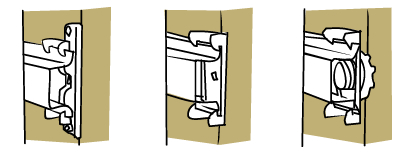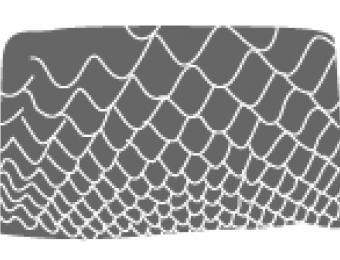
What is mechanical sound transmission?
Mechanical sound transmission is what happens when a sound passes directly from one building element to another. A great example is the sound of footsteps on an upper floor travelling to lower floors. As the foot strikes the floor’s surface, it sends a vibration which travels down through the floor, through the frame and passes through the ceiling into the room below without ever hitting the air.
What is mechanical resonance?
Mechanical resonance is what happens when the frequency of a sound aligns with the resonant frequency of the material, amplifying the sound wave. The classic example is of the opera singer breaking a glass with her voice when she hits the right note. By matching the note with the resonant frequency of the glass and sustaining it, the opera singer is able to increase the vibration of the glass to the point where it shatters, unable to cope with the movement between its particles any longer.
Many materials have more than one resonant frequency, vibrating more easily when particular sounds pass through them. If you have a big stereo, you may have noticed certain objects rattling or vibrating when certain notes are played - this is mechanical resonance.
How does mechanical resonance relate to buildings and soundproofing?
Mechanical resonance can quite literally cause a building to shake itself apart, should the right sound occur at a strong enough volume. This effect has been seen time and again in all sorts of constructions, from suspension bridges to high rise apartment blocks. It's normally less of a problem where houses are concerned though, because a house’s mass is usually a lot less than most commercial properties.
Mechanical sound transmission is a problem however - especially in multi-storey dwellings where sound can pass through the floor of one level into the ceiling of the level below.
To limit mechanical sound transmission it is necessary to put in acoustic breaks in the frame and other key structural locations, similar to the way thermal bridging is prevented. This is known as acoustic decoupling.
How can mechanical sound transmission be dealt with?
The key to stopping mechanical sound transmission lies in ensuring the sound has a limited path to travel along until it meets resistance, causing it to decay more rapidly. There are a number of ways to achieve this.
Special fastenings known as 'sound isolation clips' or 'noiseproofing clips' can be used to detach a wall from the studs, allowing the wall to vibrate separately without passing sound through the building's frame. This method of separating one wall from another is a great solution to problematic low frequency sounds, which are hard to deal with using other methods of sound insulation.
For more elaborate construction, double stud or staggered stud walls can be erected. This separates the two walls from each other completely, eliminating any contact in the framework and thus preventing mechanical sound transmission. This type of wall can be further enhanced by adding a layer of sound insulation in between the wall studs to catch any airborne noise.





